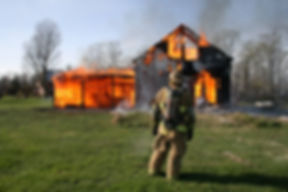Ambulance Replacement FAQ
- John Snow
- Feb 9, 2024
- 2 min read
Why does CVFRS need two ambulances?
The primary reason an ambulance service needs at least two ambulances is for backup. Reliability and availability of an ambulance is a critical link in providing EMS services and thus the need for redundancy is high. A backup ambulance is used whenever the primary vehicle is out of service for emergency or scheduled repairs or otherwise is unavailable. There are also times when two ambulances are used at the same time. For example the backup ambulance will be used if a call comes in late in a shift and the off-going duty crew has not returned from transporting and the oncoming crew is in quarters and able to respond. In addition, there are times when a scheduled event (sports event, community event) requires the presence of an ambulance crew. In this circumstance a backup crew is scheduled and the backup ambulance attends the event. The primary crew and the primary ambulance remain available for emergency response.
Why does each ambulance get replaced after 10 years?
Our experience and the experiences of other ambulance services confirm that maintaining an ambulance to the reliability standard required after 10 years of service is not viable. The national average for ambulance life is 5 to 7 years. Corrosion, wear and tear, and the natural aging of parts means that maintenance costs keep rising for an aging vehicle. In addition, emerging technologies quickly become a part of the pre-hospital care regimen. Often the cost of retrofitting these systems to an older vehicle becomes prohibitive. By using an offset 10-year replacement cycle we optimize the updating of our equipment and generally have a front-line ambulance that is less than five years old.
Why does an ambulance cost so much?
Two factors underlie the high cost of an ambulance. One is simply the inflation and supply line pressures affecting many manufactured systems today. Beyond that, however, an ambulance is a very complex vehicle providing pre-hospital emergency care with many systems (HVAC, oxygen, suction, electrical and electronic medical devices, communications systems, etc.) that must be integrated into the final construction. Often the design is custom built for each agency and vehicle. There are also ever-increasing standards for patient and provider safety. A modern ambulance is the basis for what is now termed “pre-hospital care”.
Why will a new ambulance take so long to get?
The lead time for a new ambulance is now about 30 months. This is a dramatic increase from the historic pattern of about 6 months lead time. Partly this is due to the supply line constraints mentioned earlier. There has also been a sharp up-tick in demand. Many communities used the federal funding from the 2021 American Rescue Plan (ARP) to update their emergency responder vehicles resulting in a surge in demand. In Charlotte we used these funds to build the new Town garage. With these current lead times we are now seriously behind our planned replacement cycle. If funding is approved on March 5th, we can expect to receive (and pay for) the replacement ambulance sometime in the latter part of 2026.



